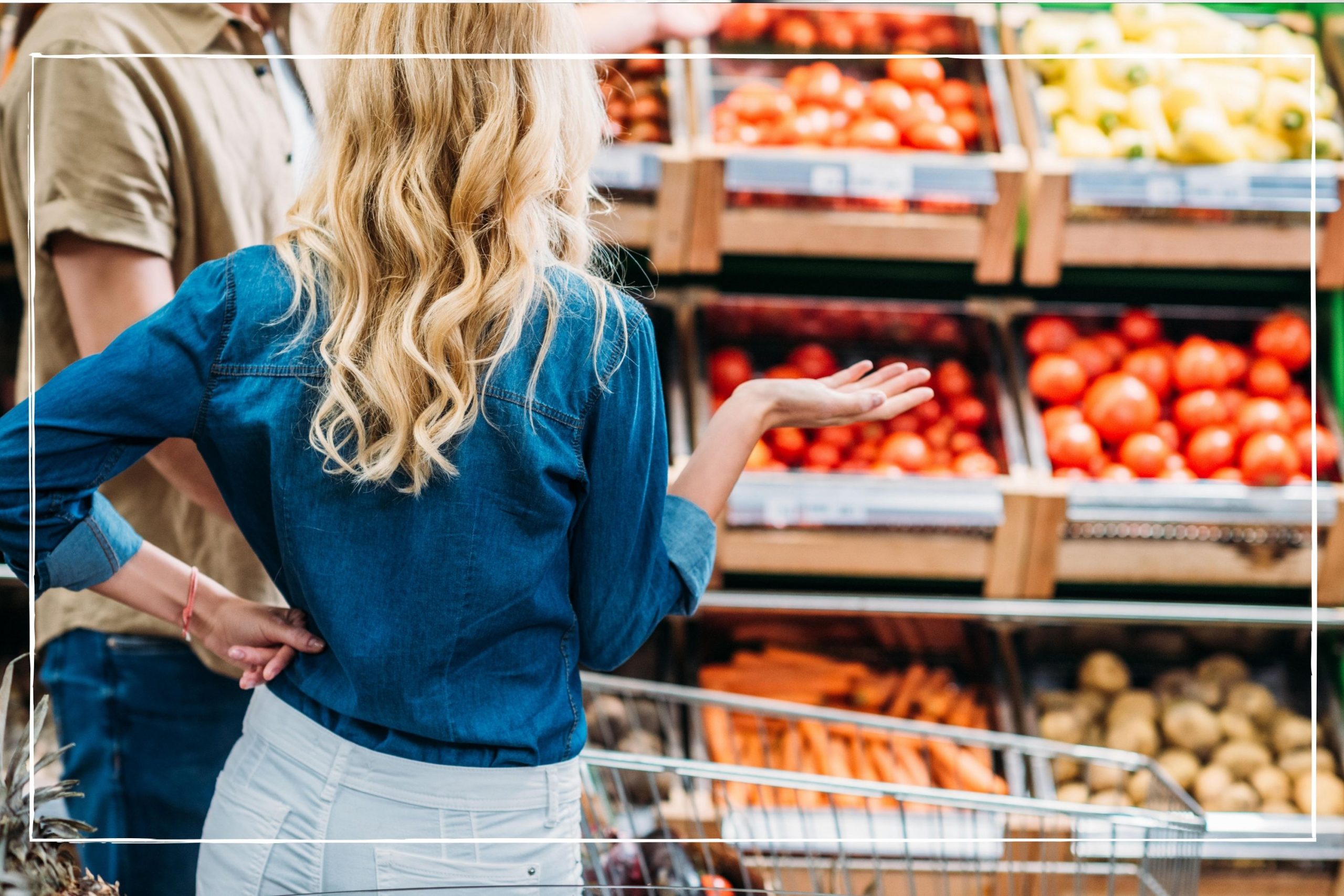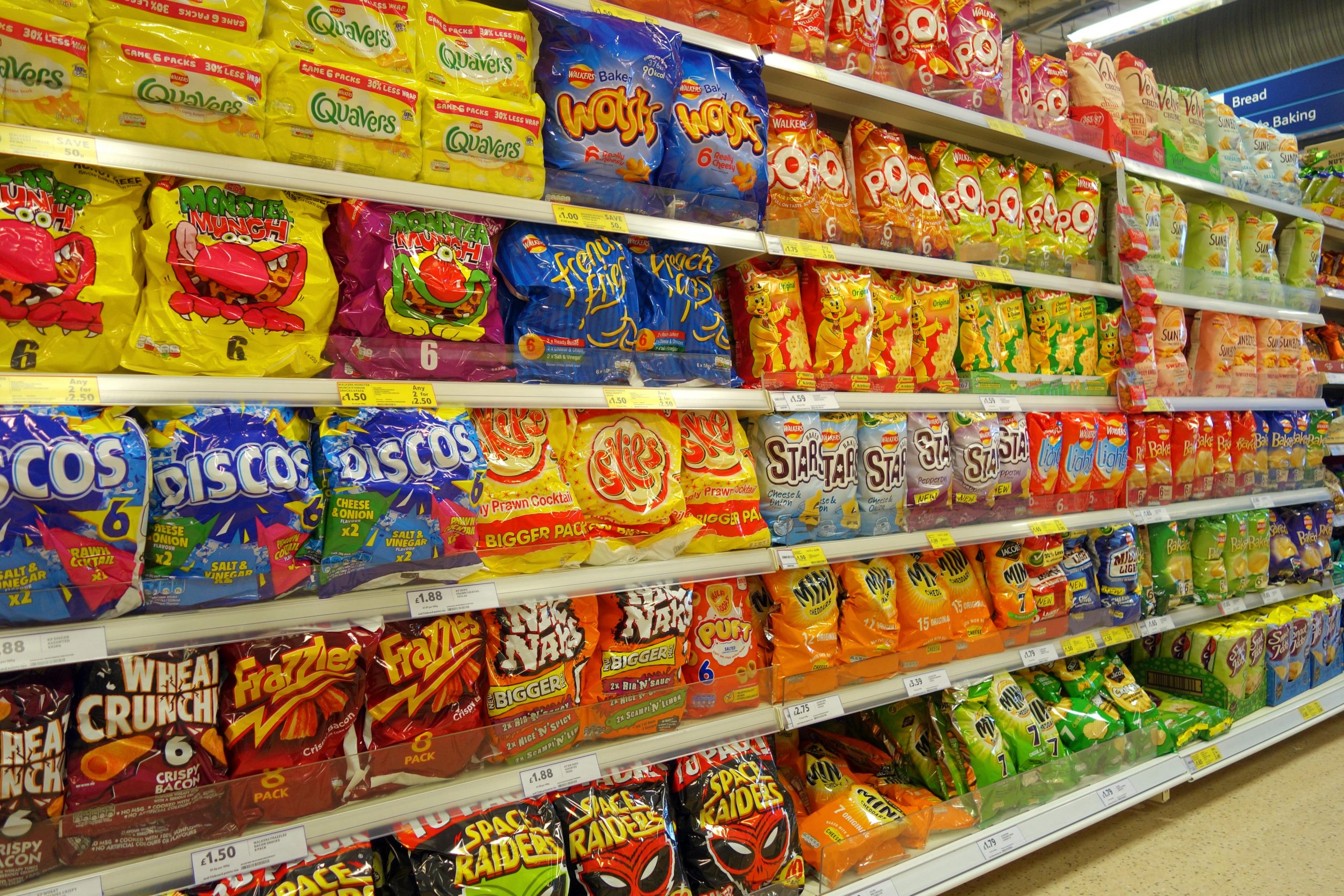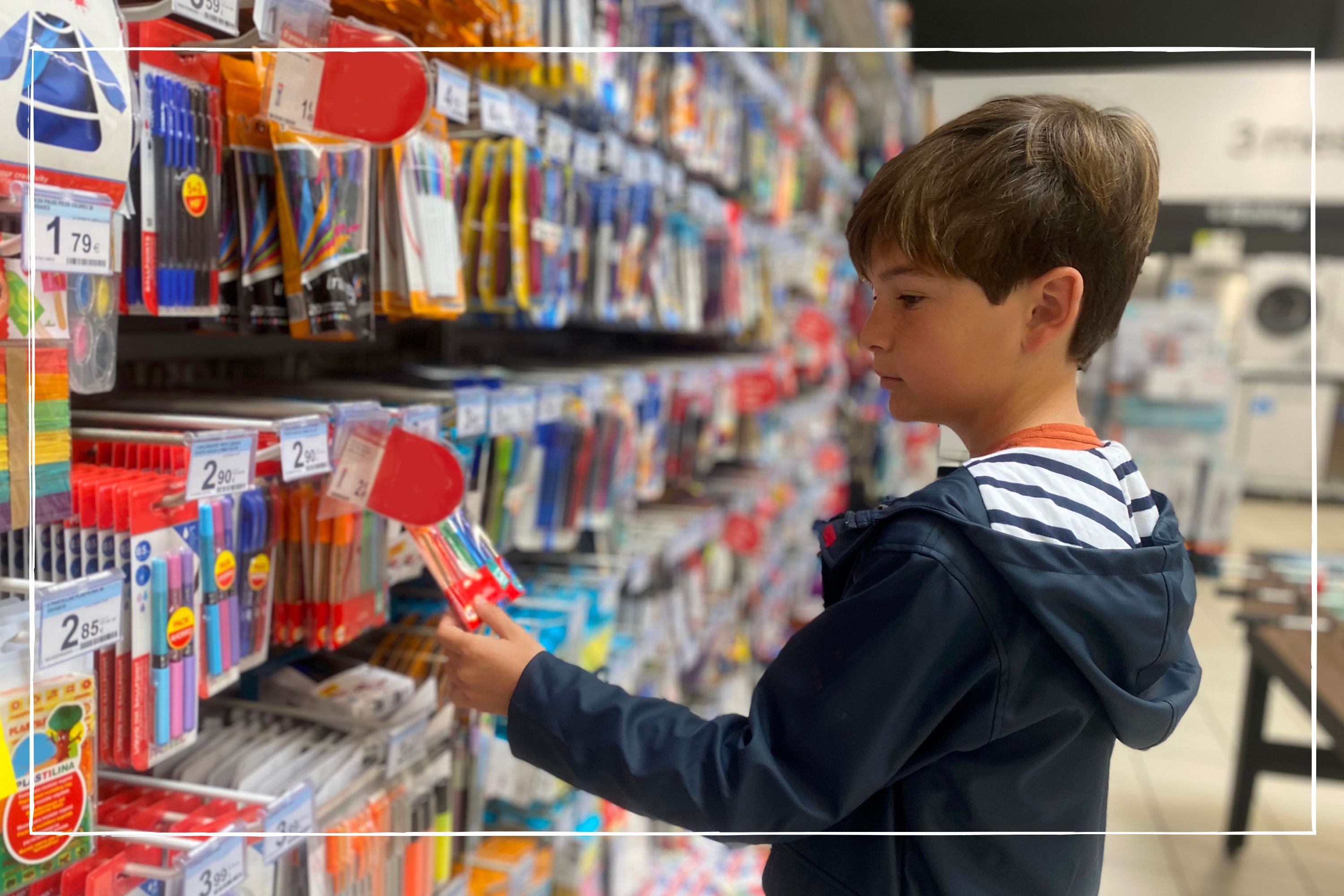Why are food prices going up and which products are affected most?
Food prices are rising at their fastest pace in almost a decade

Consumers are facing the biggest squeeze on their household finances in a generation. So it's unsurprising that many families are wondering why are food prices going up and how will it impact their food bills.
Rising food prices are a key factor in inflation reaching 40 year highs. Households will also be keen to know how to save money on food and which is the cheapest supermarket in order to keep costs under control.
Abigail Yearley, a spokesperson for Topcashback, says: “With food inflation at its highest rate since 2013, and prices set to increase even more over the coming months, many consumers will be forced to tighten their belts further. “Supermarkets are already taking measures to help their customers where possible – extending their own brand ranges and offering discounts for example." And it doesn't end at the prices on the shelves. Asda has announced a new Kids Eat for £1 initiative that will run throughout the school summer holidays to help parents cope with the cost of living crisis.
Why are food prices going up?
The answer to why are food prices going up now is different and wide-ranging. Increasing labour, energy, and transportation costs are behind the majority of increases. This is alongside production difficulties caused by severe weather conditions. These rises are all being passed to shoppers.
According to the Office for National Statistics (ONS), the average UK household spends around £3,312 a year on groceries. This excludes alcohol and equates to around £276 a month. At the current rate of food inflation, the average shopper will pay at least £180 a year more on food.
However, Myron Jobson, senior personal finance analyst at interactive investor, says: “Official statistics dramatically underestimate the extent of real-world food inflation, with some items, like pasta, rising by as much as 56% in some cases. Every shopping basket is different and, as such, the impact of food inflation is unique to each individual.”
The last time food price inflation soared was May 2020, during the first wave of the pandemic. This was down to retailers trying to prevent consumers from stockpiling by stopping their food promotions. But
GoodtoKnow Newsletter
Parenting advice, hot topics, best buys and family finance tips delivered straight to your inbox.
Retail research specialists Assosia looked at the average price rises across a range of everyday items over the past year in supermarkets Asda, Morrisons, Sainsbury’s, Tesco, Aldi and Lidl. Some of the biggest average price rises were found in the following items:
Milk prices
The cost of four pints of milk has risen by 8p to an average of £1.17 (7%) in the year to March 2022. Milk is costing more because of multiple factors. The cost of fertiliser has been driven up my gas prices (manufactured nitrogen is used in the production of synthetic fertiliser).
Cattle feed prices have also shot up. Chronic worker shortages have also had a significant impact on supply. According to Kite Consulting, the adviser to dairy farmers, the cost of four pints of milk could rocket to £1.70 this year.
Average costs (at time of writing): Sainsbury’s - £1.25 | Asda - £1.25 | Morrisons - £1.29 | Tesco - £1.15
Instant coffee prices
The average price of instant coffee (200g) has risen by 34p (14.1%) to £2.43 in the year to March 2022. This increase can be attributed to a couple of factors. Firstly, one of the main producers of coffee, Brazil, suffered from a mixture of droughts and extreme frosts which impacted the crops.
The second is the soaring shipping costs faced by suppliers as the world came out of lockdown.
Average costs: Sainsbury’s - £2.25 | Asda - £2.45 | Morrisons - £2.75 | Tesco - £2
Pasta prices
A 500g bag of penne pasta has increased by 18p (39.5%) to an average of 64p. This is due to an increase in the cost of pasta's key ingredient - durum wheat. A large portion of the durum wheat used to make pasta comes from Canada.
But in the summer of 2021, Canada faced an unprecedented heatwave and drought. This extreme weather took a significant toll on the crops, leading to a shortage. The shortage in supply pushes the price up.
Average costs: Sainsbury’s – 70p | Asda – 70p | Morrisons – 75p | Tesco – 70p
Teabags prices
A 40 pack of teabags has risen by an average of 14p (17.1%) to 96p over the past year. This is attributed to rising labour costs and unpredictable weather conditions. Tea is very sensitive to droughts and temperature, so the wave of droughts and colder-than-normal temperatures had a significant impact on tea production. Local lockdown rules during the pandemic also disrupted labour costs, the leaf-picking process itself and delayed shipments.
Average costs: Sainsbury’s – 60p | Asda – 28p (Smart price range) | Morrisons – 65p
Crisps prices
A six-pack of ready salted crisis has risen by an average of 8p (11%) to 73p in the past year. This increase is due to a variety of factors. These include rising energy costs, lorry driver shortages, and the soaring cost of rapeseed oil that’s sometimes used in crisp production.
The costs involved with producing potatoes, including labour, fertiliser, and transport, have also increased, with these increases passed on to customers. Complicated issues around Brexit won't have helped issues either.
Average costs: Sainsbury’s - 82p | Asda - 85p| Morrisons - 85p

When are food prices going up in the supermarket?
Supermarkets often increase the cost of items in January each year. Assosia found that there were 4,400 increases in product prices in January 2022. This compares to around 2,700 price rises in a typical year. There is likely to be more on the horizon as inflation is expected to rise further.
Karen Betts, chief executive of the Food & Drink Federation, says: “Food and drink manufacturers are grappling with soaring ingredient, raw material and energy costs – some businesses in our sector fear their energy bills will rise by 500% by the end of the year. Supply chains, already disrupted by COVID-19, have been further complicated by the war in Ukraine, which is causing shortages in some ingredients like sunflower oil and raising the price of substitutes.”
5 tips for dodging food price increases
- Buy own brand or a brand level below your norm: Don’t stick to your usual brand. It’s always worth checking the price difference by stepping down a level to the supermarket’s own brand, or its value/basic range if you’ve yet to buy that. In most cases, you won't be able to tell the difference. If you do, you can always go back to your normal brand for specific items.
- Look for special offers: Before filling up your trolley, see what offers you can find. For example, Tesco offers ‘weekly little helps’, including essential food items that are reduced for a limited time.
- Search for short shelf life and freeze: Make use of your freezer if you want to save cash. You can buy products near their use-by-dates such as milk and bread, and keep them in the freezer for use when needed.
- Shop for yellow stickers: Supermarkets usually have a ‘yellow sticker’ aisle with reduced products nearing or at their sell-by date. These reductions often start at around 6 pm, and you can often pick up meat for more than half the price it retails at.
- Avoid impulse buys: Keep your wits about you as supermarkets are clever at finding ways to get you to part with your cash, such as putting tempting treats around the store and beside the till. Stick to a shopping list, or order online and use click and collect if available to dodge the delivery fees.
Related features:
- Tomato shortage: Why are UK supermarkets running out of tomatoes?
- Fruit and vegetable shortage in the UK - those empty shelves explained
- Why is there an egg shortage in the UK?
- Coffee Mate shortage 2023: Why are supermarkets running out of Coffee Mate?
Video of the Week
-
 How to save money: 28 family-friendly money-saving tips for mums and dads
How to save money: 28 family-friendly money-saving tips for mums and dadsUnderstanding how to save money is key to limiting the impact of rising costs as much as possible
By Sarah Handley Published
-
 14 hidden benefits of your Amazon Prime membership
14 hidden benefits of your Amazon Prime membershipWe reveal the less-obvious perks of a Prime membership that will help you get the most value out of your subscription fee
By Rachel Wait Published
-
 14 surprising ways to spend your Tesco Clubcard vouchers - from restaurants and cinema passes to mini breaks and Disney+
14 surprising ways to spend your Tesco Clubcard vouchers - from restaurants and cinema passes to mini breaks and Disney+Tesco Clubcard vouchers can help you cut the cost of everything from groceries and travel to days out and cinema tickets
By Heidi Scrimgeour Published
-
 How to get Disney+ for free and save up to £79.90 a year
How to get Disney+ for free and save up to £79.90 a yearEven though the streaming giant ended its free trial offering, there are still multiple ways you can get Disney+ for free for up to 12 months
By Sarah Handley Published
-
 Parents of teens who have just taken their GCSEs urged to check child benefit status ahead of August deadline
Parents of teens who have just taken their GCSEs urged to check child benefit status ahead of August deadlineWith a child benefit deadline looming, some parents could see their payments reduced or stopped altogether - here's why
By Sarah Handley Published
-
 Parents should hold off buying this back to school staple 'as close to their first day as possible', says retailer
Parents should hold off buying this back to school staple 'as close to their first day as possible', says retailerWith parents turning their attention to kitting their kids out for the new school year, research suggestions which items should be left until the last minute
By Sarah Handley Published
-
 7 ways to save on back to school essentials, as its revealed parents will spend £2.3 billion in 2024
7 ways to save on back to school essentials, as its revealed parents will spend £2.3 billion in 2024We share ways you can get your child all the bits and bobs they need for the new school year, without breaking the bank
By Sarah Handley Published
-
 What day is child benefit paid around the bank holiday? Everything parents need to know
What day is child benefit paid around the bank holiday? Everything parents need to knowKnowing which day child benefit is paid when it comes to the bank holiday can help families plan their budgets accordingly
By Sarah Handley Published